Pre-Exposure Prophylaxis (PrEP) & Post-Exposure Prophylaxis (PEP)
Overview
PrEP and PEP are two important strategies used to prevent HIV infection, especially in individuals who are at a higher risk of exposure to the virus. They are both acronym abbreviations:
PrEP (Pre-Exposure Prophylaxis)
PrEP is a preventive approach in which individuals who are at high risk of HIV infection take medication regularly to reduce their risk of contracting the virus. The medication typically used for PrEP is a combination of two antiretroviral drugs, tenofovir and emtricitabine, sold under the brand name Truvada (or its generic equivalents). PrEP works by preventing the HIV virus from establishing an infection in the body if it is encountered through sexual or injection drug use exposure.
Key points about PrEP:
Who should consider PrEP: PrEP is recommended for individuals at increased risk of HIV, including those with HIV-positive sexual partners, individuals engaging in condomless sex with multiple or anonymous partners, and people who inject drugs.
How to take PrEP: PrEP is typically taken as a daily pill, but it can also be taken on-demand (e.g., before and after sexual activity for certain populations). It's essential to take PrEP consistently as prescribed by a healthcare provider for it to be effective.
Regular monitoring: Individuals taking PrEP should undergo regular medical check-ups, including HIV and sexually transmitted infection (STI) testing, to ensure their continued health and adherence to the medication.
PEP (Post-Exposure Prophylaxis)
PEP is a short-term treatment taken after potential exposure to HIV to prevent infection. It involves taking a 28-day course of antiretroviral medications as soon as possible, ideally within 72 hours (but no later than 72 hours) after a high-risk exposure. PEP is intended for emergency situations, such as condomless sex with a partner known to be HIV-positive or occupational exposure (e.g., needlestick injuries for healthcare workers).
Key points about PEP:
Timing is critical: PEP should be started as soon as possible after a potential exposure to HIV. Delaying treatment reduces its effectiveness.
Prescribed by a healthcare provider: PEP should be obtained through a healthcare provider or an emergency room. A healthcare provider will assess the level of risk and determine if PEP is warranted.
28-day course: PEP involves taking a combination of antiretroviral medications daily for 28 days.
Follow-up care: Individuals on PEP should receive regular follow-up care and testing to monitor for HIV infection.
It's important to note that PrEP and PEP are not 100% effective in preventing HIV transmission. They are part of a comprehensive approach to HIV prevention, which should also include safer sex practices (e.g., condom use), regular HIV testing, and other harm reduction strategies for those at risk. Additionally, both PrEP and PEP are intended for specific high-risk situations and should not replace consistent and safer sexual practices. If you believe you may be at risk for HIV or have been exposed to the virus, consult a healthcare provider to discuss the appropriate prevention or treatment options for your situation.
